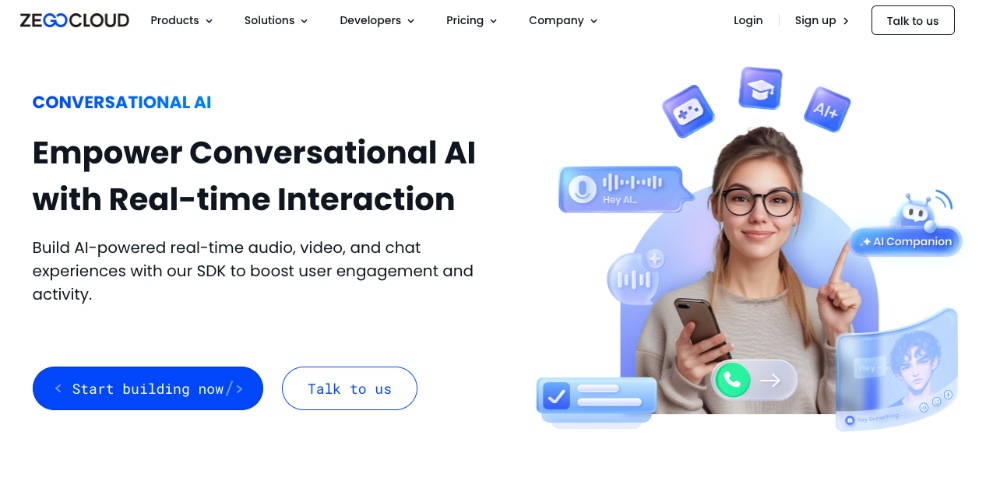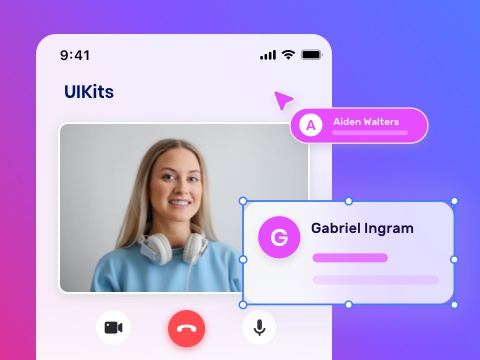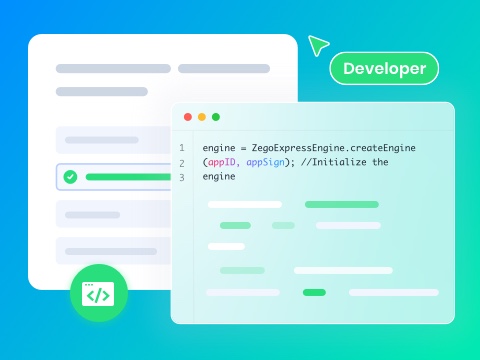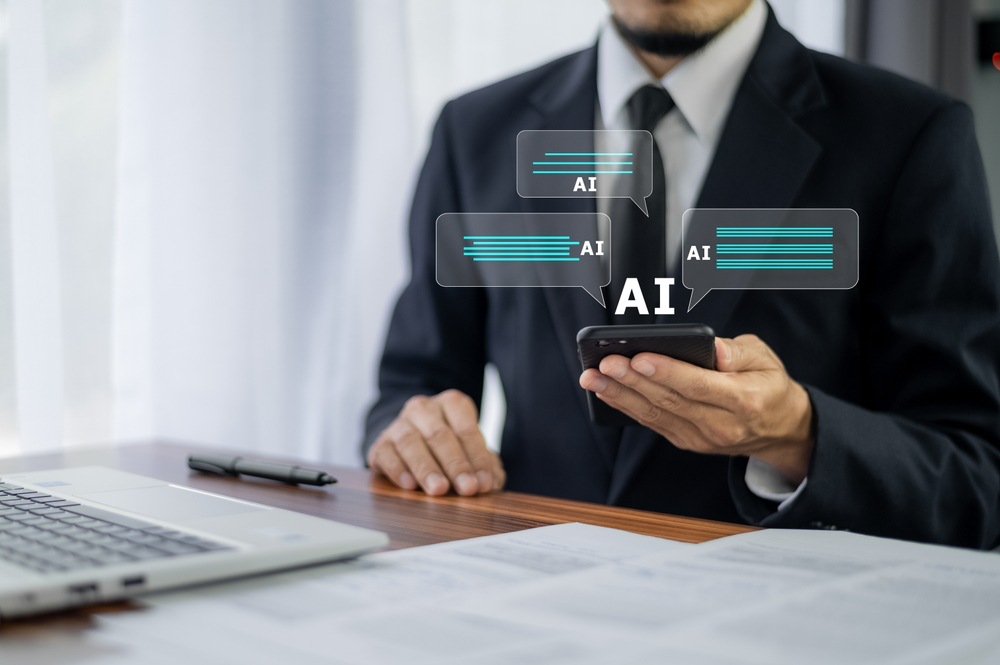Artificial intelligence systems that analyze and respond to data instantly are known as real-time AI. These systems empower businesses to ensure they make quick decisions, such as detecting fraud or providing personalized experiences. By processing information through real-time artificial intelligence, they significantly enhance operational efficiency and customer satisfaction. So, we recommended reading this article to discover its applications, benefits, and transformative potential.
What is Real-Time AI?
Artificial intelligence real-time processes and analyzes data instantly to enable immediate decision-making in dynamic environments. It also uses machine learning and advanced algorithms to handle data because it is designed for faster and more accurate responses. Unlike traditional AI, which operates on pre-collected data, AI adapts on the go. Moreover, this capability makes it invaluable for applications like fraud detection and real-time customer support.
This technology thrives in scenarios where speed and accuracy are critical. It powers systems like healthcare monitors and personalized marketing platforms. By continuously analyzing live data streams, real-time AI helps businesses adapt quickly to change. Plus, its ability to process massive amounts of information ensures efficient operations and improved outcomes. As industries evolve, real-time AI remains crucial for maintaining responsiveness and achieving competitive advantages.
How Does Real-Time AI Work?
Real-time AI processes live data using advanced algorithms and machine learning models within milliseconds. Moreover, it collects data from sensors or other inputs to rapidly analyze it and generate insights. These systems rely on cloud computing, edge devices, or hybrid setups to maintain a slow performance. Continuously learning from incoming data improves decision-making capabilities and helps people adapt to changing environments effectively.
The process begins with data ingestion, where raw inputs are collected and preprocessed for analysis. Furthermore, machine learning models analyze data to detect patterns, anomalies, or actionable trends in real-time. The system triggers actions like sending alerts, generating predictions, or making autonomous decisions. To sum it up, the entire process ensures fast and accurate responses to make real-time AI essential for industries like healthcare and predictive analytics.
Benefits of Real-Time AI for Your Business
In addition, let us dive into the list of benefits that you can gain from implementing such systems into your businesses:
- Call Center Management: Real-time artificial intelligence can analyze customer sentiment during calls to allow the agents to adapt their approach accordingly. Ultimately, it leads to improved customer satisfaction along with minimized call handling time.
- Custom Prices: As businesses analyze the market trends and customer demand, the algorithm dynamically adjusts the prices. Moreover, it allows businesses to remain competitive and maximize profits by offering custom pricing based on customer behavior.
- Detects Fraud: Artificial intelligence in real-time can immediately identify suspicious activities like fraudulent transactions or account breaches. Businesses can also take immediate action to prevent losses and minimize the impact of fraud.
- Finance Traders: It can analyze market data, news, and social media sentiment to provide traders with valuable insights and predictions. This empowers traders to make informed decisions, which leads to increased returns.
- Customer Experience: AI can personalize customer experiences across various touchpoints by analyzing individual preferences and purchase history. Therefore, offering tailored recommendations, promotions, and services to enhance customer satisfaction and loyalty.
Key Roles and Use Cases of Real-Time AI
With advancements, AI has found its application in almost every field known to humans. Now, let us look into the real-time AI process’s key roles and use cases to further understand what it is.
1. Predictive Maintenance
This system analyzes and sensors data from machinery to predict the potential failures of equipment before they occur. It allows for the prediction of possible equipment failures in advance. Moreover, businesses can proactively schedule maintenance to minimize costly downtime and unexpected repairs. This optimizes the resources and allocates them efficiently so that the lifespan of the equipment is extended.
2. AI Vehicles
AI vehicles or self-driving cars depend on real-time AI for safe and efficient operations. The system processes data from various sensors and perceives the surrounding environment with high accuracy. Therefore, it makes critical driving decisions and avoids obstacles for a safe drive. It also ensures passenger safety and enhances the overall driving experience for all.
3. Supply Chain Optimized
Businesses can swiftly adjust production schedules and improve inventory management accordingly. Real-time artificial intelligence analyzes data streams related to inventory levels, demand forecasts, and transportation routes to optimize supply chains. This ensures the efficient delivery of goods while minimizing costs and reducing waste throughout the supply chain.
4. Customer Service
AI-powered chatbots and voice assistants analyze customer interactions across various channels, understanding their needs and providing immediate support. These AI customer service systems can resolve simple issues, answer frequently asked questions, and anticipate customer needs, improving customer satisfaction and loyalty. Artificial intelligence in real-time also enhances overall customer service interactions.
5. Financial Trading
High-frequency trading heavily relies on algorithms, as they analyze market data with incredible speed to identify trading opportunities. These algorithms can execute trades within milliseconds, potentially generating significant returns while minimizing risk exposure.
6. Healthcare
Real-time AI revolutionizes healthcare by enabling faster and more accurate diagnoses. AI algorithms analyze medical images to assist healthcare professionals in detecting abnormalities and making decisions. This leads to improved patient outcomes and more efficient healthcare delivery.
You may also like: 10 Use Cases of Conversational AI in Healthcare
Challenges and Considerations of Real-Time AI
Irrespective of the applications of this technology, users will come across some limitations that can affect efficiency. These points will help you understand the restrictions you can face while implementing AI in your workflow:
- Data Quality and Volume: Real-time systems need a steady stream of accurate and reliable data, and data quality can be difficult to achieve. Moreover, maintaining a large enough volume of data for the system to learn and function effectively is crucial.
- Response Time: Real-time AI applications require extremely low delays and fast responses. This is why meeting such strict requirements can be challenging when dealing with large amounts of data and complicated processing.
- Ethical Considerations: The use of such systems raises significant ethical concerns for many businesses as well. Potential privacy violation is a possibility of biases in how the system works.
- Security and Trust: Ensuring the security and trustworthiness of real-time systems is paramount, as it requires strong measures to protect data from cyberattacks. Additionally, preventing manipulation of how the system works is essential.
- Regulatory Compliance: The rapid development of real-time systems necessitates the development of clear regulations and guidelines. These regulations will ensure the responsible and ethical use of these technologies.
- Interpretability: Many real-time artificial intelligence systems operate in a complicated way, and figuring out how these systems make decisions can be challenging. This lack of transparency can hinder trust and limit the widespread use of these systems in critical applications.
Enhance User Experience with ZEGOCLOUD’s Real-Time AI Solutions
If you are looking for a way to get real-time AI assistance that processes and analyzes data instantly, we have the solution. ZEGOCLOUD, being a versatile platform, offers you an innovative AI agent API that features LLMS and TTS models. One can personalize an AI with contextual awareness to provide immediate and accurate responses. Unlike other platforms, it has content moderation, monitoring, and review of user and AI responses.

Besides, users can benefit from multi-mode interaction features, such as in-app chat or voice calls. When interacting on voice calls, the AI can make lip and voice synchronization possible to understand the context. Additionally, developers can select the ASR vendors while generating real-time AI to ensure precise and accurate speech recognition. This SDK also provides TTS vendors that you can integrate to give AI a natural voice.
Moreover, having global coverage with 500+ nodes in 212 countries, ZEGOCLOUD guarantees real-time AI assistance globally. With 500ms speed and the AI noise reduction feature provided by this SDK, users can minimize background noise. In addition, its cloud service full-link optimization improves the data speed and reduces latency during interaction. Plus, its intelligent playback buffer control optimizes response time by adjusting the low data.
Conclusion
In conclusion, real-time AI revolutionizes industries by enabling faster and more accurate decision-making processes. This guide discussed the benefits and challenges gained by leveraging the power of innovative solutions like those offered by ZEGOCLOUD APIs. Businesses can unlock the full potential of AI and gain a significant competitive advantage. By embracing such systems, you can improve efficiency and enhance almost all tasks.
Read more:
FAQ
Q1: What is a Real-Time AI?
A real-time AI refers to an artificial intelligence system that processes and responds to data or events as they occur, without noticeable delay. These systems are designed to make decisions or provide feedback instantly, often used in applications like autonomous driving, real-time language translation, or live chatbots.
Q2: What is Real-World AI?
Real-world AI refers to artificial intelligence that is applied in practical, real-life scenarios. It involves the use of AI in everyday applications, such as healthcare, finance, transportation, and customer service, to improve efficiency, decision-making, and user experiences. Unlike theoretical or experimental AI, real-world AI is used to solve actual problems and add value to society.
Q3: Is ChatGPT 4 Real-Time?
ChatGPT-4, like other versions of GPT, is not strictly real-time in the traditional sense. While it can generate responses quickly after receiving input, it does not continuously process data or react to events in real-time like some other AI systems. It processes each query independently and provides answers based on the model’s training, but it doesn’t interact with live data or events continuously.
Q4: What is a Real-Time Example of AI?
A real-time example of AI is a self-driving car. The AI system in a self-driving car must process data from cameras, sensors, and other inputs in real time to make immediate decisions, such as steering, braking, or accelerating, based on the environment. Another example is live chatbots that assist customers instantly as they ask questions or need support on websites.
Let’s Build APP Together
Start building with real-time video, voice & chat SDK for apps today!










